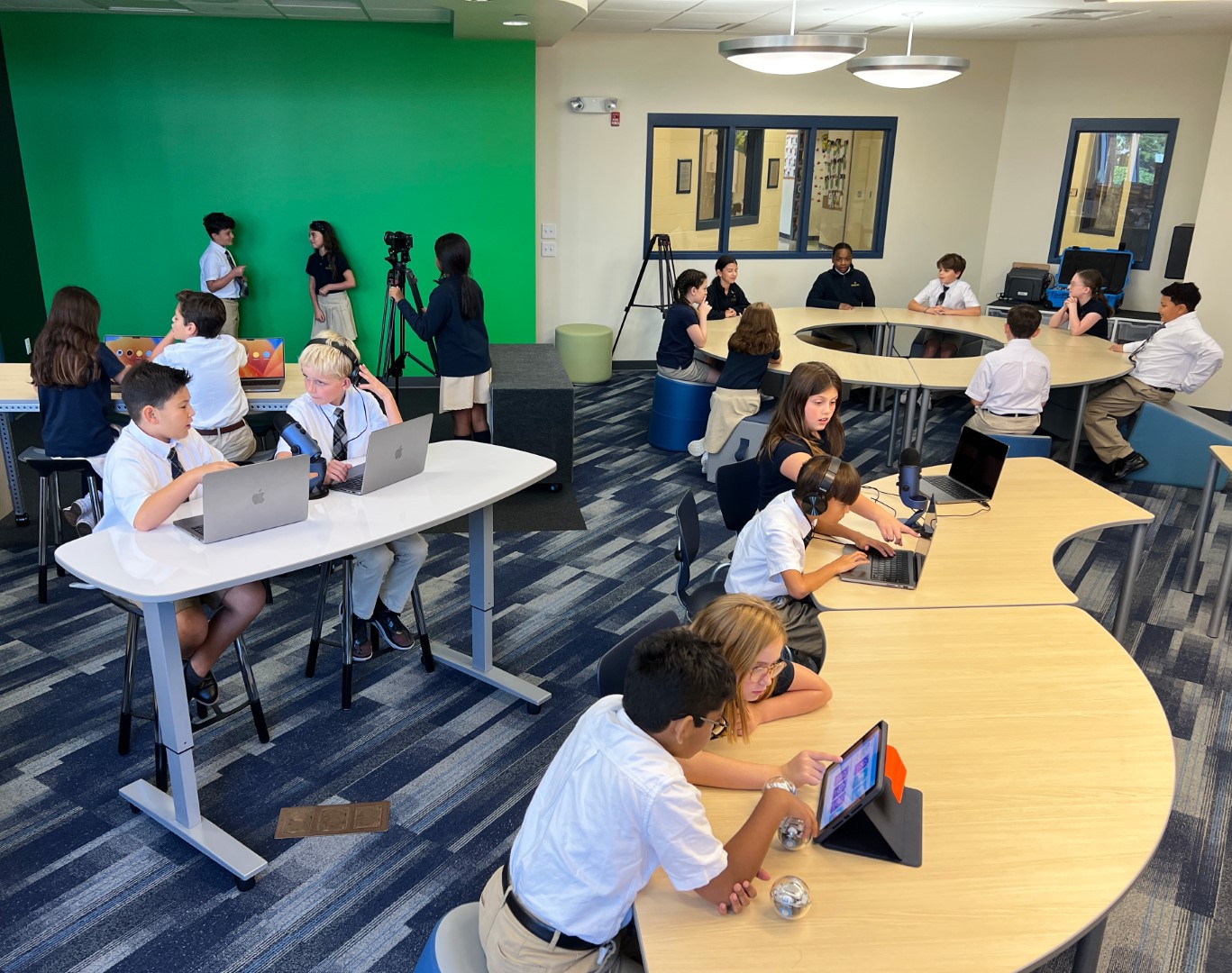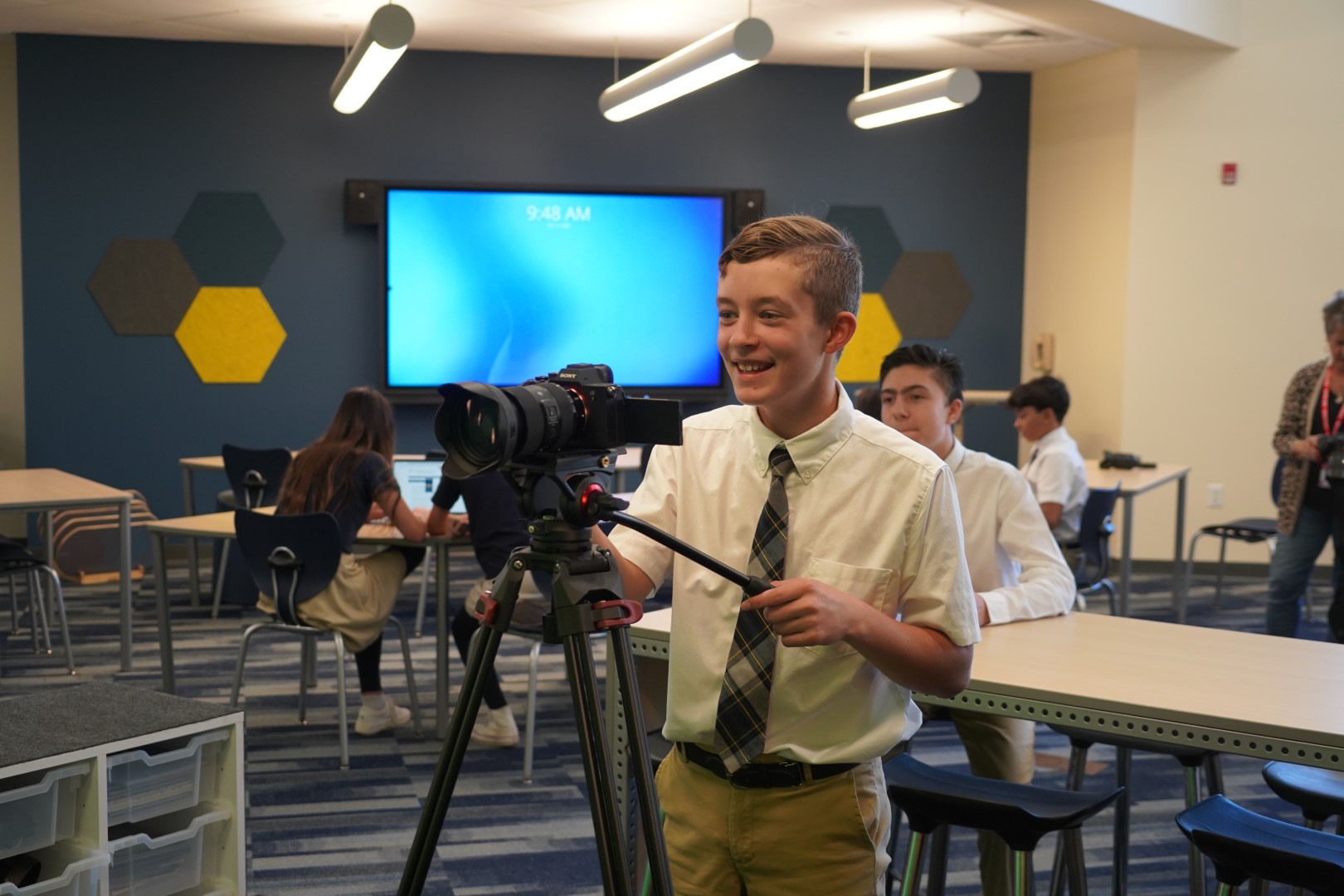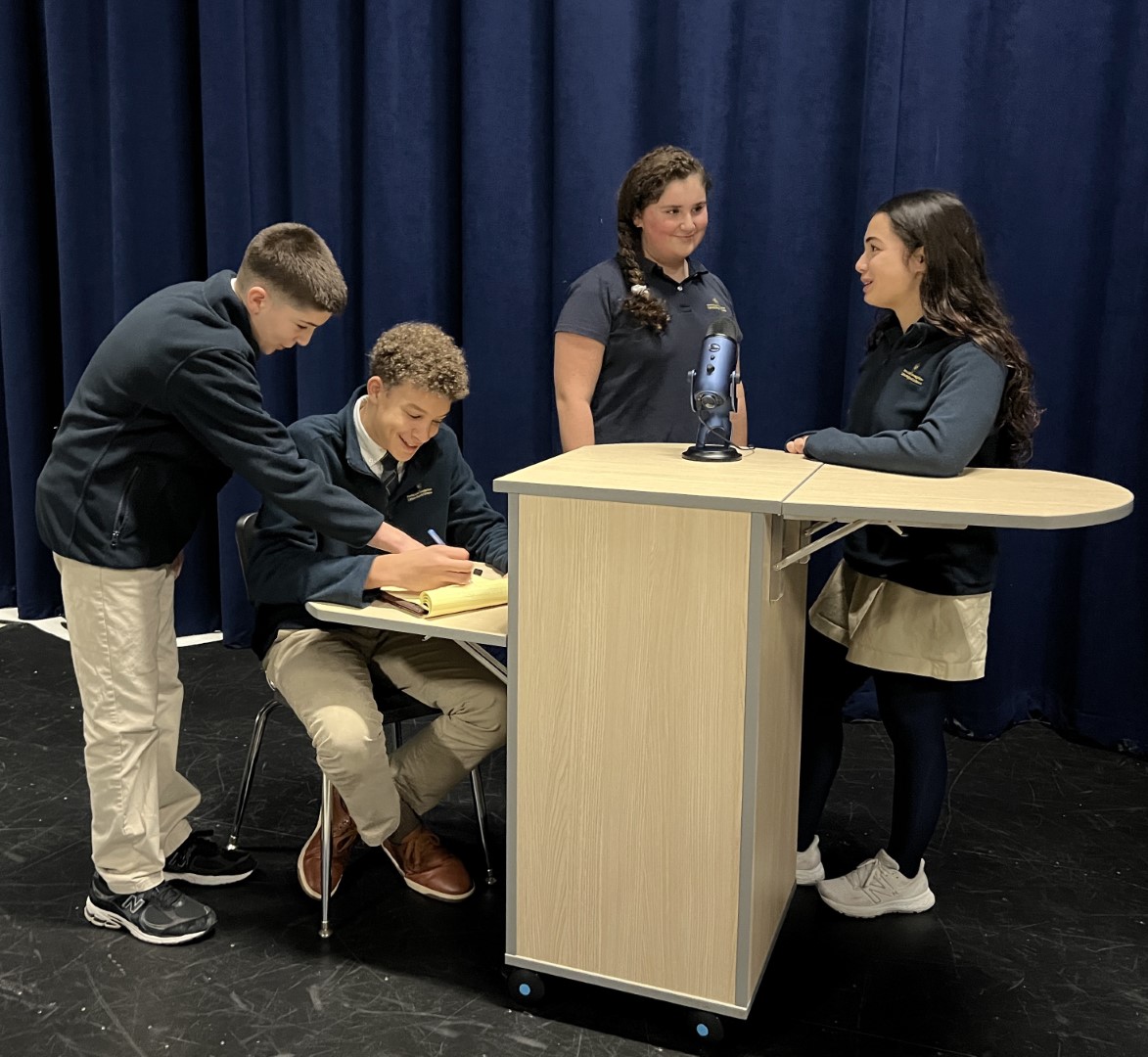Study Objective
Ensure that all leadership, facilitators, and learners of ICCR experience meaningful spatial influence, solidifying an understanding, acceptance, and implementation of the environment as a second teacher.
SCHOOL-WIDE INITIATIVES
- To gain mastery of facilitation process skills such as: instruction, assessment, community, and feedback by including the practice of environmental design & awareness
- To gain expertise & confidence whilst in the growth process of the following skills: innovation, communication, problem-solving, compassion , and Gospel-centered leadership
ICCR BACKGROUND
- Catholic Regional School
- Roughly 350 learners
- Grades Pk – 8
- PBL Focused Curriculum
- Integration of Faith-Based
- Experiences
Key Message
The physical space can positively support learning experiences by acting as a second teacher.
Faith Oriented
21st Century learning environments should encourage spiritual excellence and promote understanding of societal processes.
Design Attributes
Natural Lighting, Soft Hues, Intriguing
Lines/Angles, Inviting Textures
DELIVERABLES
- Study Strategy & School-Wide Initiative
- Craft Messaging & Solidify Criteria
- Specify Data Collection & Program Analysis
- Communicate Design Objectives
- Host Debrief, Feedback, & Workshops
- Map Progress to Pinpoint Averages & Outcomes
- Case Study Collaboration
– School Leadership Committee
– Steering Committee
– 8th Grade Panel
– Consultation Agency
– NorvaNivel - Methodology Guidelines
– Comprehensive Needs Assessment
– Environmental Effect on Outcomes Over
– Time Survey
– Observation & Anecdotal
– Progress Walkthrough – Likert Model
– Workshop(s) – Interview Style
TARGET COMPLETION DATE
- June 2024
Next Steps
Continued outcome measurement,
analysis, and development
PRIMARY STAKEHOLDERS
ICCR Principal
Mike Miele
Assistant
Sue McKenna
True North Navigating Education
Christina Corser
NorvaNivel Director of Ed
Hannah Tejeda
Outcomes
- FEDC-based spatial capacity avg growth of 4-5% within 5 environment types
- Middle School FEDC-based spatial growth of 30% in Sensory Input/Output and Growing Flexible Thinking capacities
- Middle School FEDC-based spatial growth of 60% in Pretend Play capacities
- Elementary School FEDC-based spatial growth of 20% in Social Connection capacities
- Elementary School FEDC-based spatial growth of 32% in Growing Flexible Thinking capacities
- Elementary School FEDC-based spatial growth of 48% in Organization capacities
- Environment as a Second Teacher acceptance rate growth of 50% post workshop
- Spatial Objective Integration avg growth of 65%
- Overall increase and integration of PBL curriculum and methods in conjunction with the physical environment
- Overall increased attendance during Pathways Programming
- Overall increased connection in middle school self-actualization and problem-solving processes








